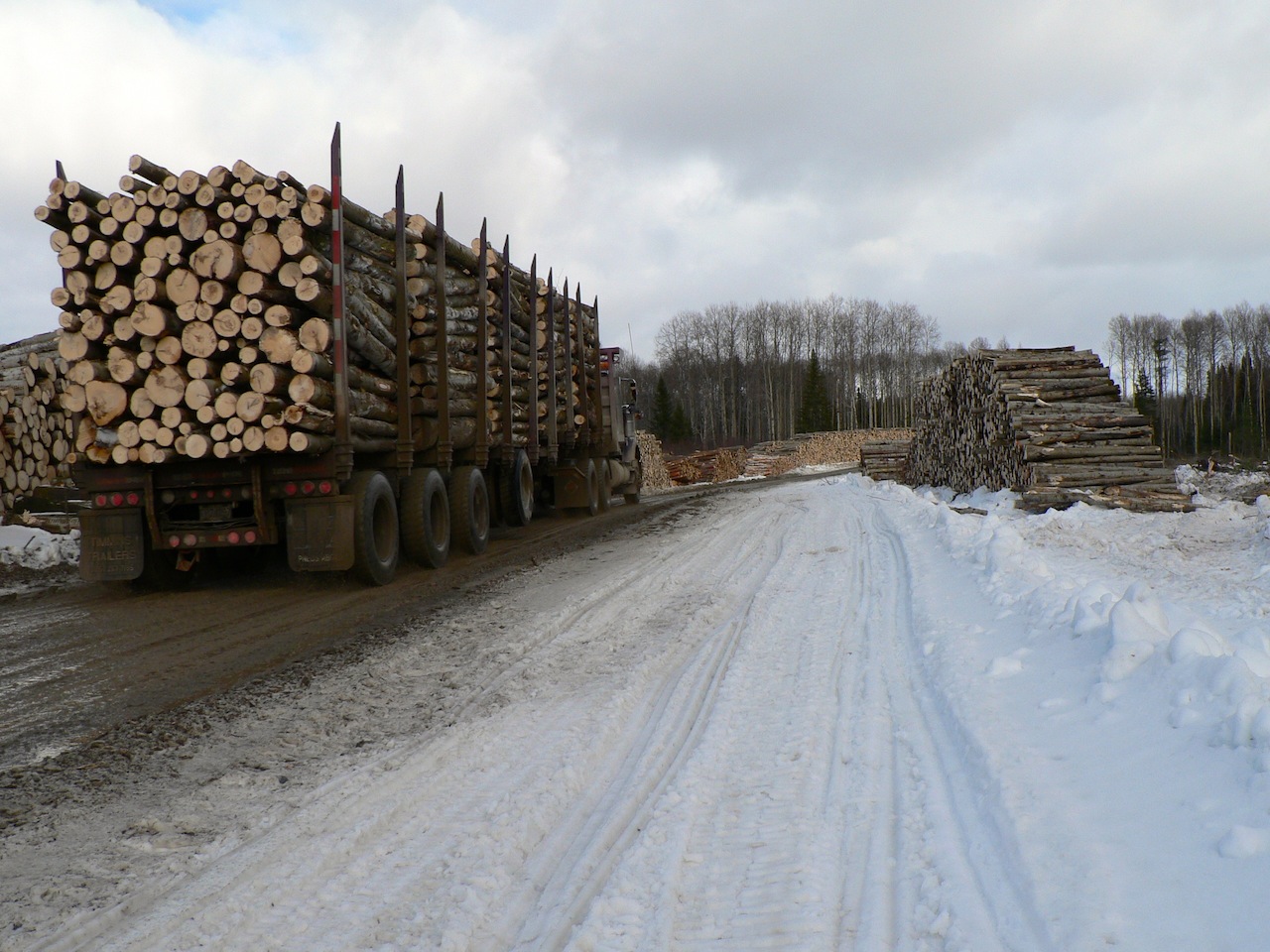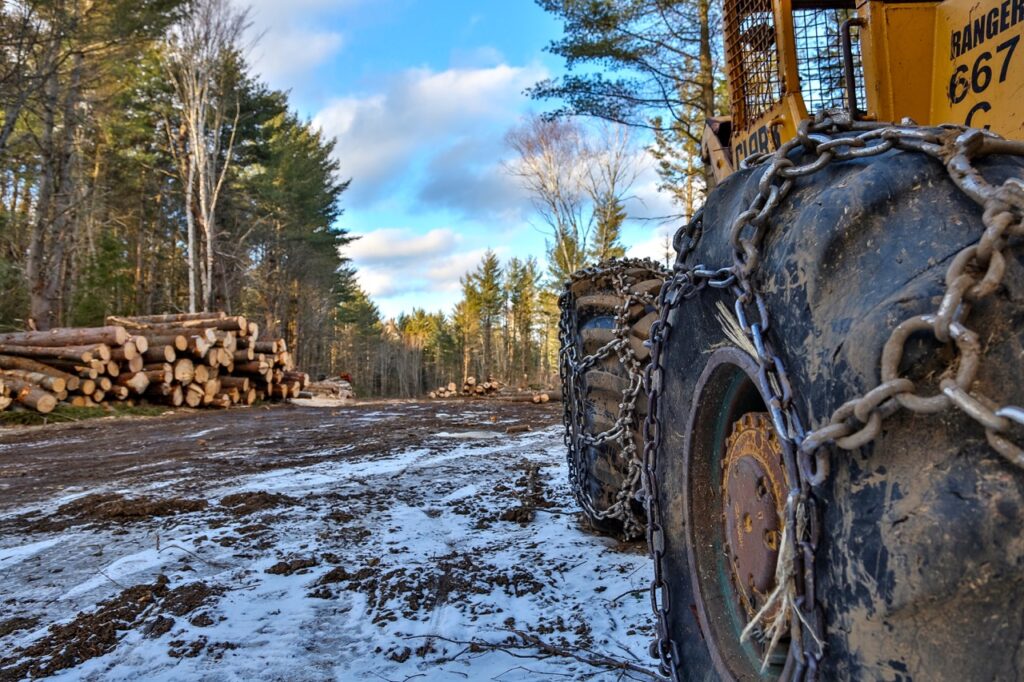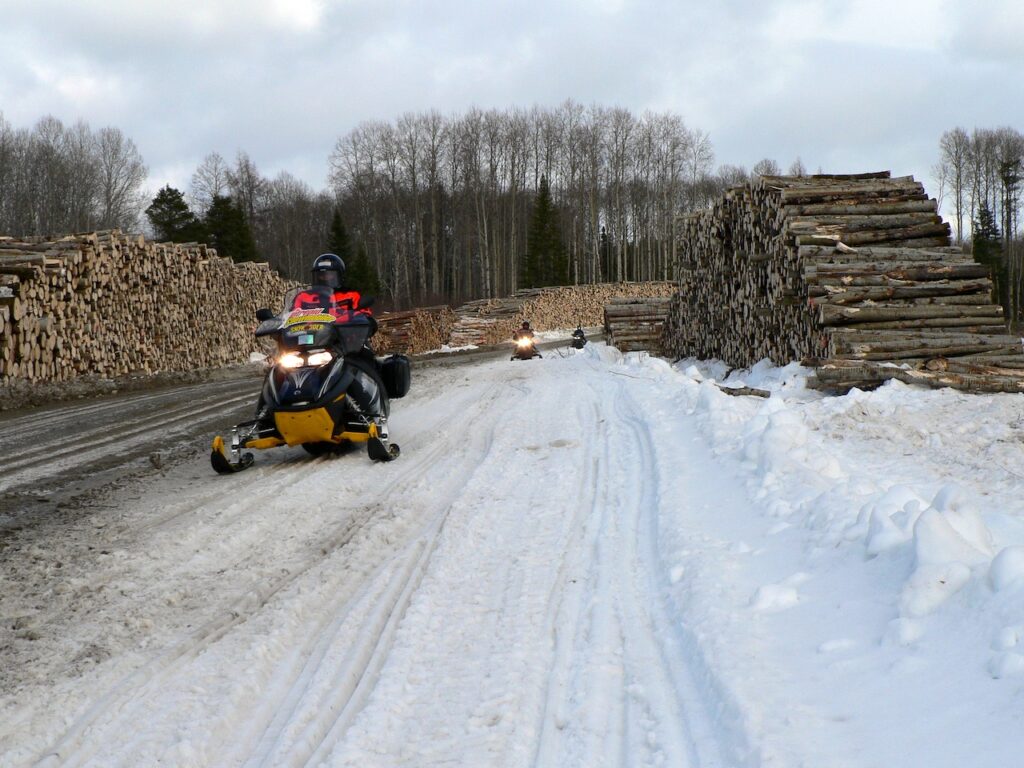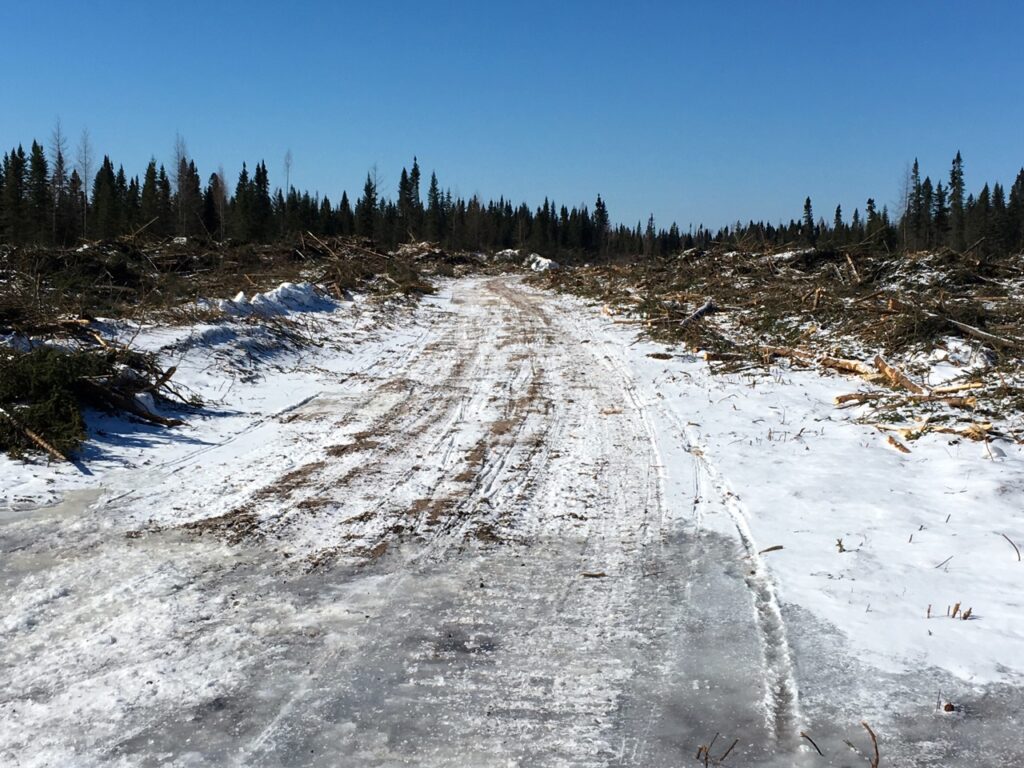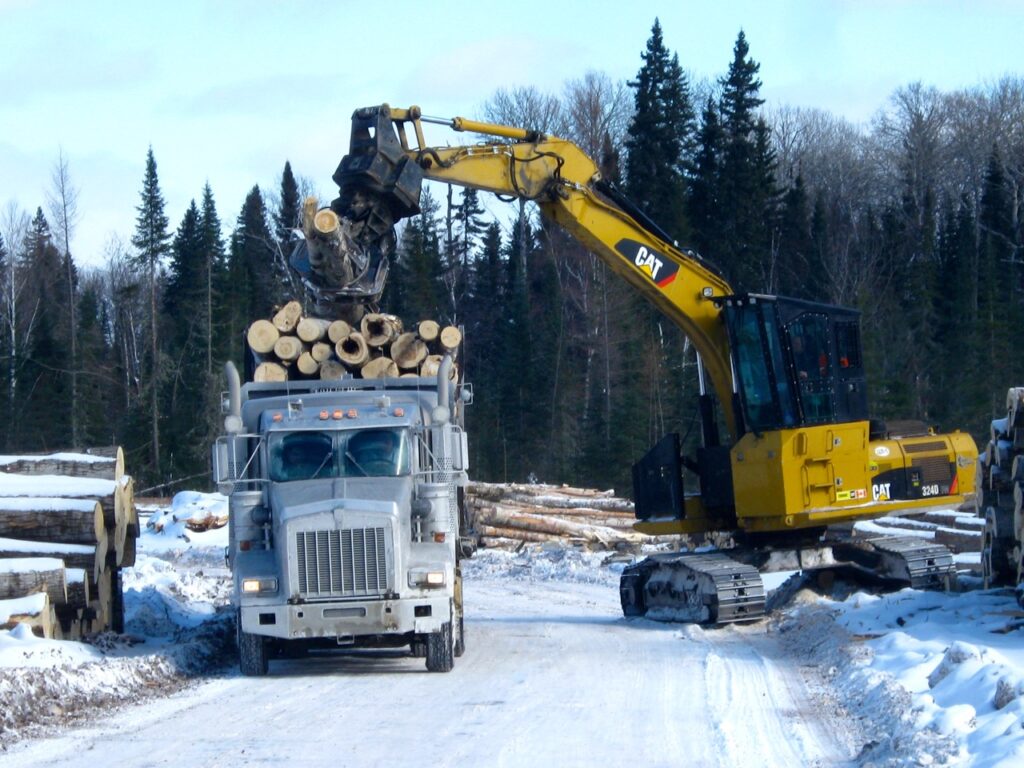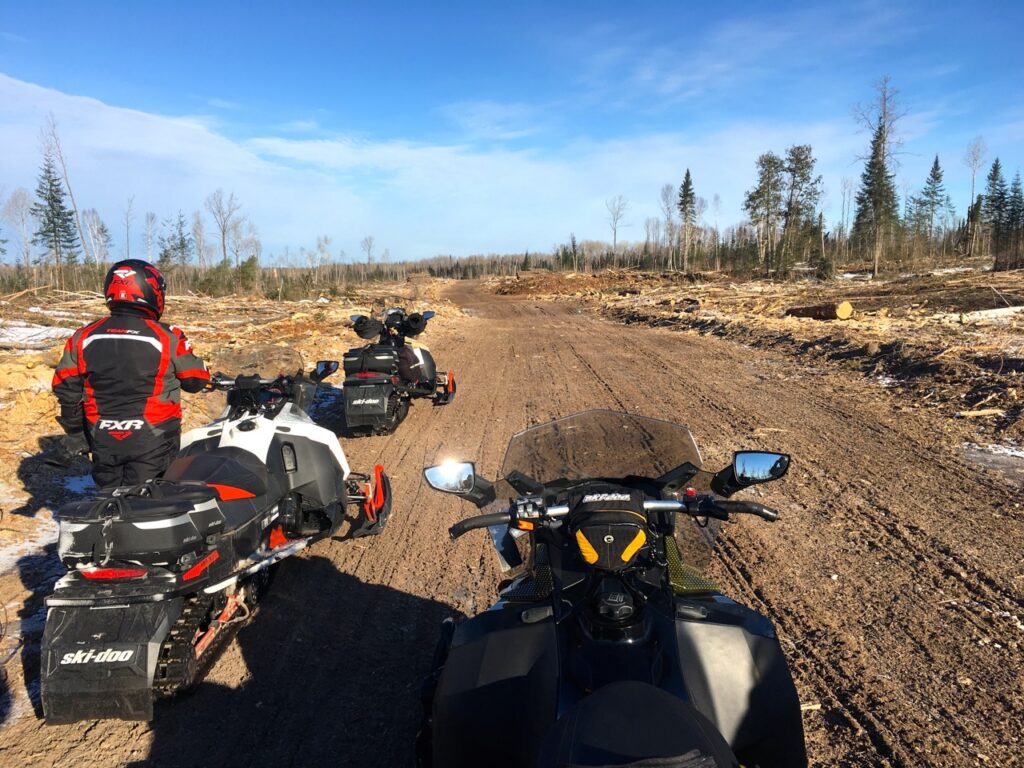Cautions For Snowmobiling Active Logging Roads…
Related: How To Stay On The Trail
Want to know how to go snowmobiling active logging roads on your snowmobile tour or snowmobile vacation? Are you a novice rider who’s never ridden one before (or checked out my beginners tips)? An active logging road is a scary place to be riding your snowmobile. So here’s some advice to survive snowmobiling active logging roads.
Normally, logging companies plough the surface down to the dirt. Then any hard packed snow is treated with sand or gravel so the logging trucks have good traction. Often, these are pieces of wood or small rocks scattered about. There are few if any trail signs. On either side, the snow banks are typically high and steep where the snow has been piled by consecutive ploughings. No escape for a snowmobile there…
Scary enough? How about fully loaded logging trucks high-tailing it to the mill with drivers who correctly think they have complete right of way. And who mostly couldn’t stop in time if they suddenly encountered an unexpected snow machine. It’s not a place most snowmobilers want to be.
Snowmobiling Active Logging Roads
From 2011 to 2016, the Ontario Ministry of Transportation (MTO) 2016 annual report shows an average of 20 fatalities and 300 injured per year for snowmobile and ATV drivers on off-highway roads. Off-highway road locations may be maintained less frequently, have fewer safety features, and be less accessible for emergency vehicles than provincial or municipal roadways.
According to Workplace Safety North, “Unlike city or highway roads, forest access roads are built to a lower standard and less maintained.They’re unpaved and narrow, the corners aren’t banked. They can be steep and rough, with tight curves and sudden obstacles like a fallen tree or a washout. Along the road, there’s often no signage or speed limit, and there’s lots of different types of vehicles on the road. These roads can also be remote. Your cell phone might not get reception out in the bush, so communication can be difficult if you don’t have a two-way radio.”
Snowmobiling Active Logging Roads with No Warning
If you do any amount of touring, chances are that you will ride an active logging road sooner or later. Normally what happens is that you plan your route and your destination. On the way, you discover a logging operation underway on the trail ahead. Often, once you’ve started there will be no other trail to get where you need to go. Usually, there is little warning about a logging operation ahead. Nothing on your trail map. No warning at the hotel. No indication from other riders or from anyone else.
Suddenly, after riding many kilometres, maybe past the point of no return time and fuel-wise, you spot a sign that says “Caution. Logging Ahead.” It’s located right at the place where the groomed trail disappears. It is ploughed to the earth for as far as you can see. Maybe there’s a sign indicating which way to go and how far you’ll have to travel on bare ground. Maybe there’s even a detour, likely poorly marked. But it’s just as likely that you’ll be deposited on that active logging road to fend for yourself. If so, here’s what to do.
Snowmobiling Active Logging Roads Best Advice
Make sure your entire group is together. Agree on which direction to go. Slow the pace down so that you have good control and ample opportunity to implement unexpected avoidance measures. Spread out, leaving lots of room between sleds. This way, if a logging truck suddenly appears, everyone has as much time as possible to react and get out of the way.
Leader’s Job
The leader should always keep right and watch the road ahead for signs of oncoming traffic. Especially at blind spots such as hills and corners. The leader must be prepared to get out of the way fast, possibly with no time to warn those behind. The leader’s primary job is to avoid collision and warn the logging driver that there are snowmobiles on the road. Frequently, the driver will radio the base that sleds are on the road so other trucks will be aware of your presence.
Second Rider’s Job
Meanwhile, the second rider is responsible for watching the leader carefully and staying right. Also, for staying far enough behind that if the leader suddenly reacts to an oncoming truck, the second rider has time to get out of the way and warn everyone behind. All riders should understand that a logging truck is unlikely to stop, particularly if it’s on a slippery stretch or an ascent. Hopefully, it will slow down as much as possible.
Tail Rider’s Job
It’s difficult to know from which direction logging trucks may be coming (there may be two-way traffic). So it’s also important that the last two riders have rear view mirrors (as everyone should). The tail rider’s job is to keep an eye out for an overtaking logging truck. Then to make sure its driver sees that there are snow machines ahead. It’s difficult to warn the rest of your group. But if everyone is moving at a moderate pace, one of the last two riders should be able to catch up and pass the word up the line. Try to find the next available spot to pull over and let the truck pass.
Make Eye Contact
Logging trucks and other heavy equipment have both right of way and of weight. Never act like you own the road. Don’t assume what an operator will do or that he knows what you’re doing. Always try to establish eye contact to confirm intentions and avoid tragic mistakes. If any logging personal direct you where or when to go, follow their lead.
Snowmobiling Active Logging Roads – Other Advice
If you see anyone involved in the logging operation, be sure to stop and ask if trucks are running, which way and when. Also ask where the groomed trail picks up again and if that person can radio your presence to others in the operation. Finally, don’t stop on a logging road unless absolutely necessary. And then only pulled over tight to the right bank in single file on a long straight stretch with excellent sight lines. Keep track of the distance traveled on the ploughed road so you can inform other riders and any hospitality establishments in the area.
Crossing Logging Roads
Often, a snowmobile trail will cross a logging, mining or utility road. It’s a natural feeling to think that you’re way out in the middle of nowhere, with no traffic to worry about. But it’s never safe to assume that road is empty. So always stop and look both ways. You can bet any truck or equipment heading your way will be booting it with little expectation of a snowmobile suddenly crossing in front. And if you meet, guess who wins?
Thanks to Kenny Johnson of the Polar Bear Riders, Cochrane Ontario, for providing advice on the article.
The tips and advice in this blog are the opinions of the author, may not work in every situation and are intended only for the convenience and interest of the reader, who has the personal responsibility to confirm the validity, accuracy and relevancy of this information prior to putting it to their own use.

